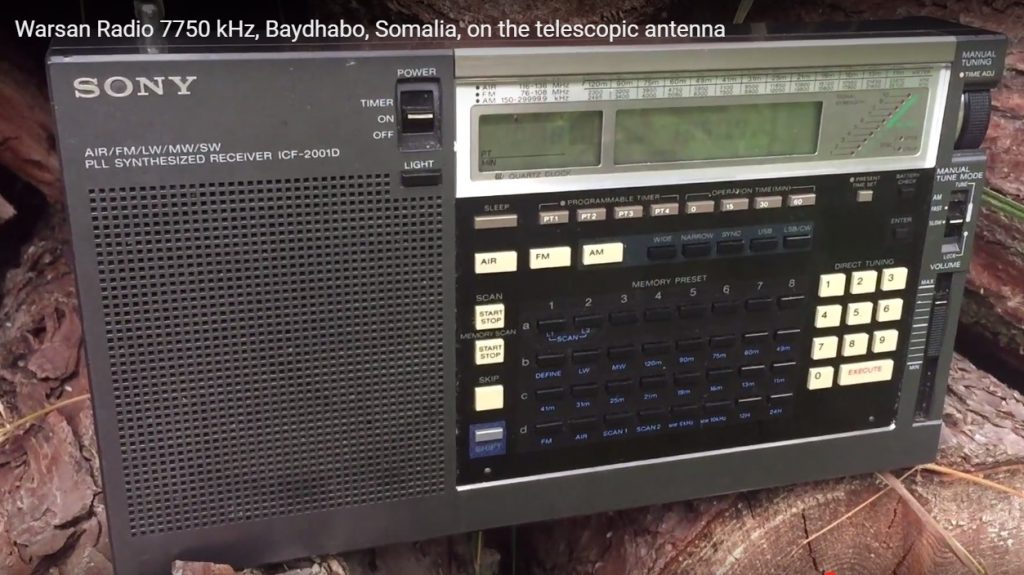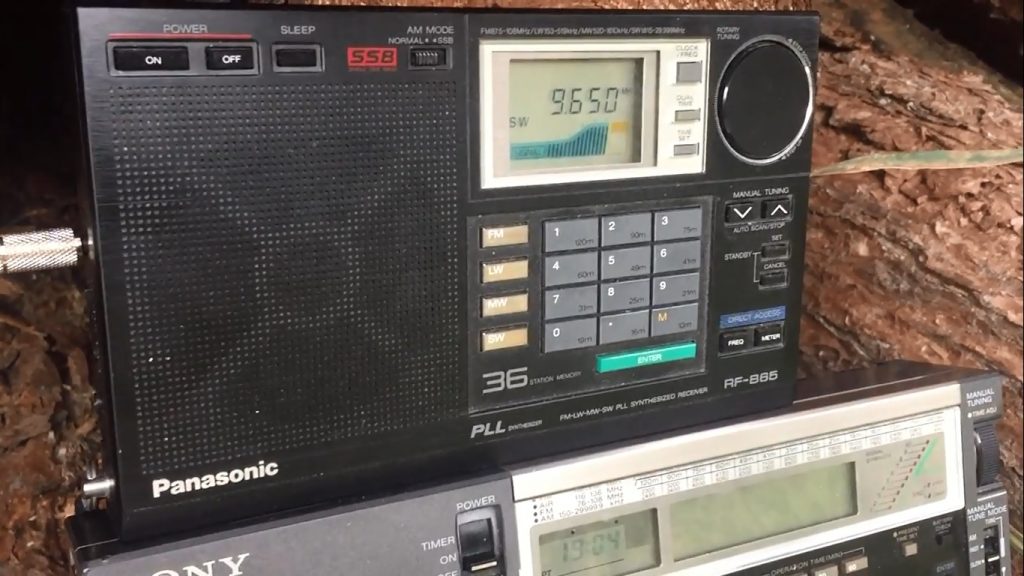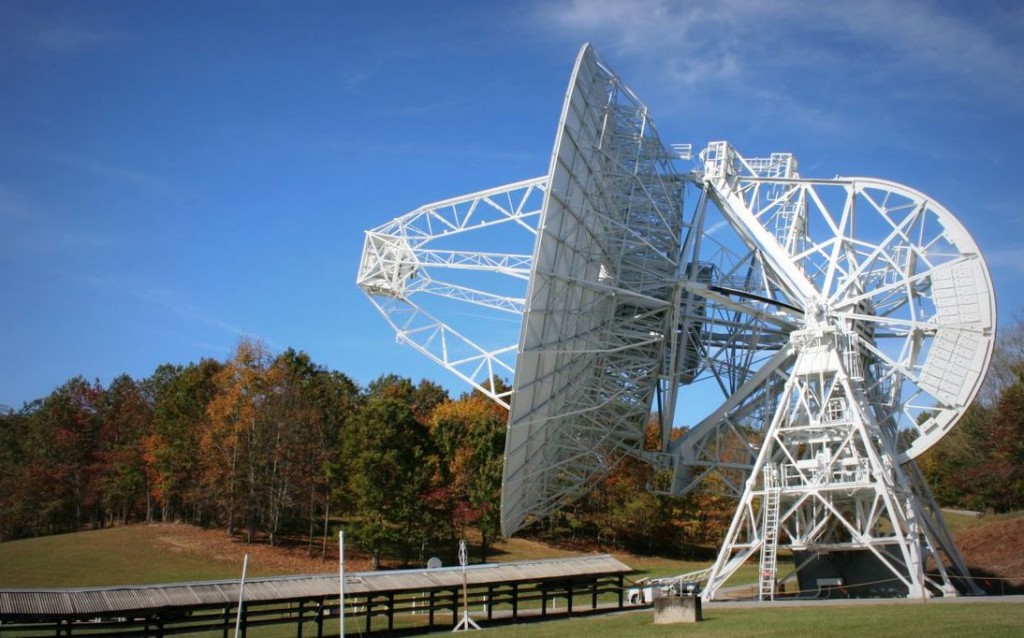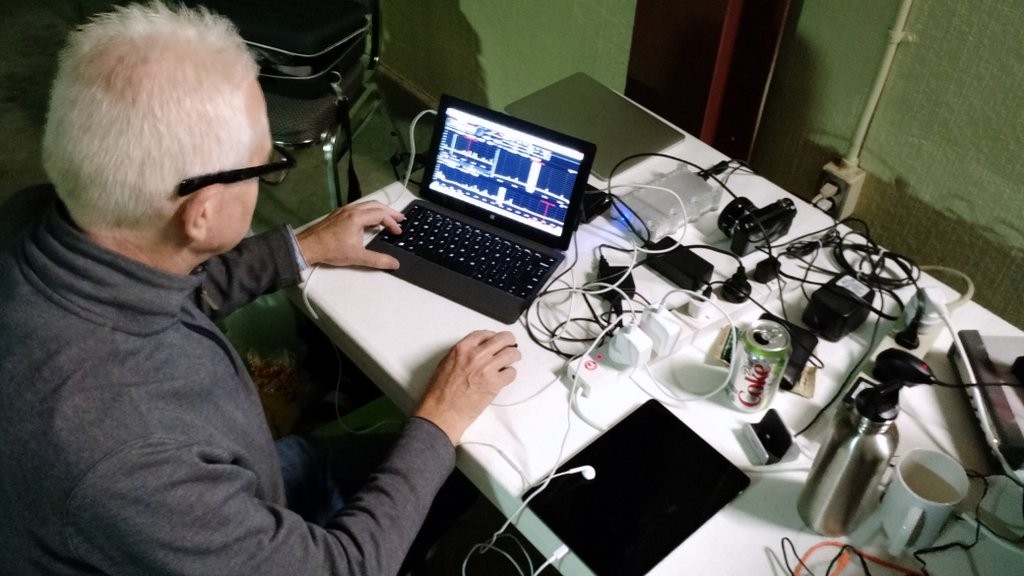
Mark Fahey, scanning the bands with his WinRadio Excalibur/Surface Pro 2 combo
The SWLing Post DXpedition at PARI is going very well. We started yesterday around noon with beautiful fall weather; late last night, it started raining but that hasn’t dampened our spirits today.
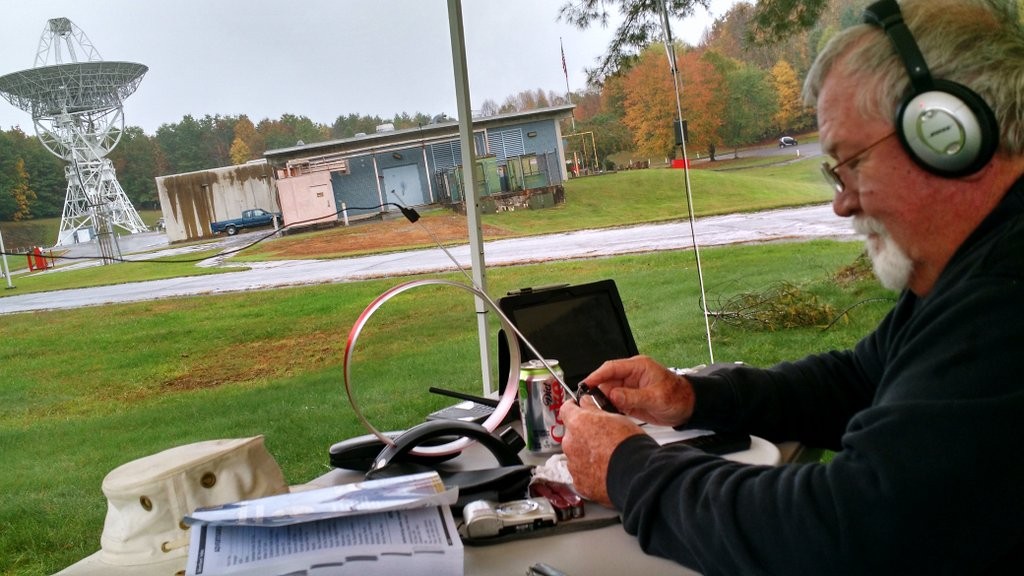
Despite the wet, chilly weather, Gary Donnelly (above) has been logging numerous shortwave stations during the day and mediumwave stations at night via his assortment of ultralight radios. Bill Boyd, another DXpeditioner, has been travelling the 200 acre PARI campus and listening via his Tecsun PL-880.
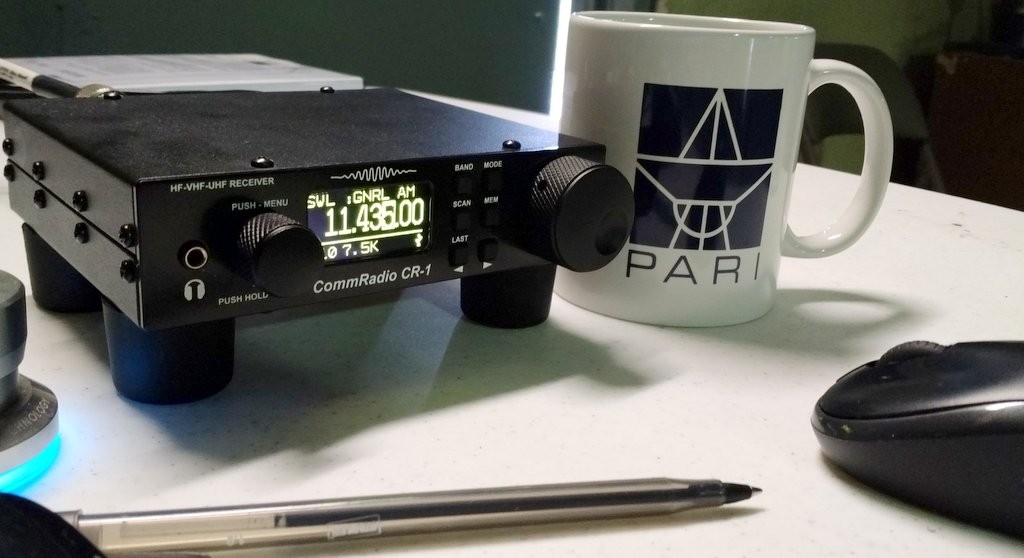
DXpeditioner, Mark Fahey, has traveled here from his home in Australia, thus he’s particularly enjoyed hearing South American stations which are somewhat rare in his corner of the world. Today alone, Mark snagged two other firsts: the time station CHU Canada, and a perfect two hour recording of the Voice of Nigeria in DRM. Mark says that his listening expectations are turned upside down, because day/night band openings are nearly opposite of what he’s used to. This is the great thing about SWLing during travels: exotic stations become much lower hanging fruit.
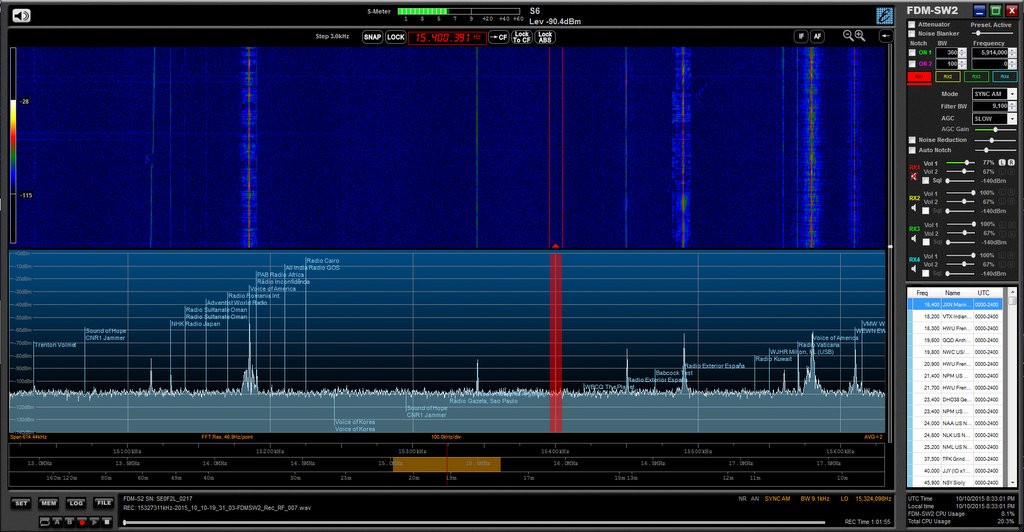
Screenshot of the Elad FDM-S2 on part of the 19 meter band
Mark and I have set up a table full of SDRs and have been actively recording spectrum while listening. We have a WinRadio Excalibur, Elad FDM-S2 and the SDRplay RSP.
We also have the CommRadio CR-1 hooked up: it has been a fantastic receiver for visitors to use and a brilliant auxiliary receiver while both SDRs have been recording spectrum simultaneously.
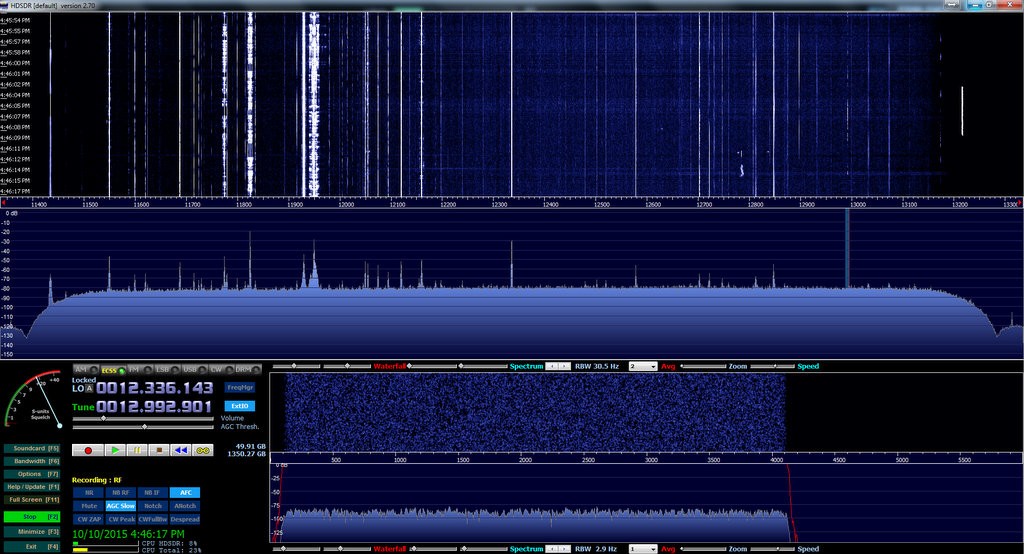
The SDRplay RSP via the HDSDR app
A few samples from the logs
Despite mediocre band conditions, we’ve managed to hear a lot of stations.
Here is our band scan at 1500 UTC on the 19 meter band:
- 15140 Radio Sultanate Oman Arabic
- 15255 Radio Free Europe Turkmen
- 15265 Adventist World Radio Hindi
- 15290 Adventist World Radio Punjabi (vy weak)
- 15300 Radio Romania International Arabic
- 15395 Athmeeya Yatra Radio Sindhi (vy weak)
- 15410 Radio Liberty (faint)
- 15420 BBC English
- 15435 Radio Riyadh Arabic
- 15460 Radio Free Europe Tajik
- 15490 Radio Exterior de Espana Spanish
- 15535 Radio Cairo Arabic
- 15550 Radio Dabanga Sudanese Arabic
- 15580 Voice of America English
- 15595 Vatican Radio Arabic
- 15610 EWTN (WEWN) English
- 15620 Radio Veritas (?) Filipino (?)
- 15670 Adventist World Radio English
- 15700 China Radio International English
- 15770 WRMI English
1600 UTC on the 25 meter band:
- 11435 HM01 Cuban Numbers Station Spanish
- 11550 EWTN (WEWN) Spanish
- 11600 Bible Voice BCN Persian (faint)
- 11620 All India Radio Russian (faint)
- 11715 Vatican Radio Russian (faint)
- 11775 Caribbean Beacon English
- 11825 WRMI (Overcomer) English
- 11950 Radio Habana Cuba Spanish
- 12050 EWTN (WEWN) Spanish (vy weak)
- 12055 Voice of America Somali
- 12160 WWCR English
2000 UTC on the 25 meter band:
- 11600 Denge Kurdistan Kurdish
- 11670 All India Radio Hindi
- 11700 All India Radio GOS
- 11735 Zanzibar Broadcasting Corporation Swahili
- 11760 Radio Habana Cuba French
- 11775 Caribbean Beacon English
- 11810 BBC English
- 11825 WRMI (Overcomer) English
- 1900 Voice of America French
- 11930 Radio Marti Spanish (being jammed by Cuba)
- 11955 Adventist World Radio Dyula
- 11995 Radio France International French
- 12050 EWTN (WEWN) Spanish
- 12060 Radio Algerienne Chaine 1 Arabic
- 12095 BBC English
- 12105 WTWW Portuguese

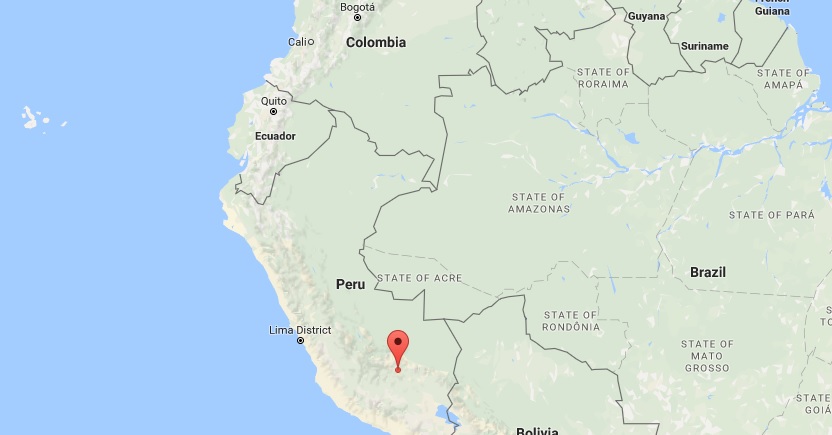
 A view looking toward
A view looking toward 
